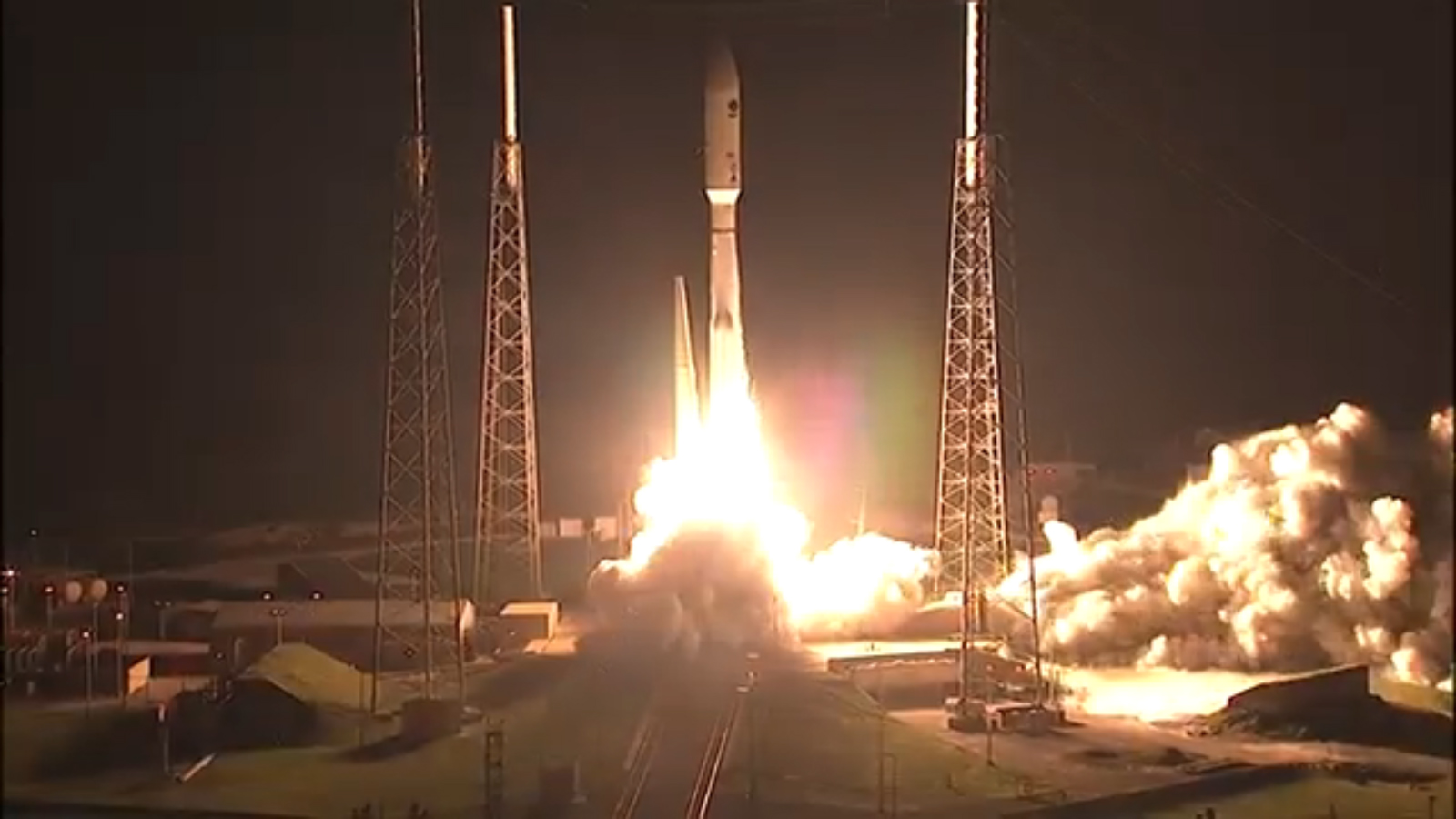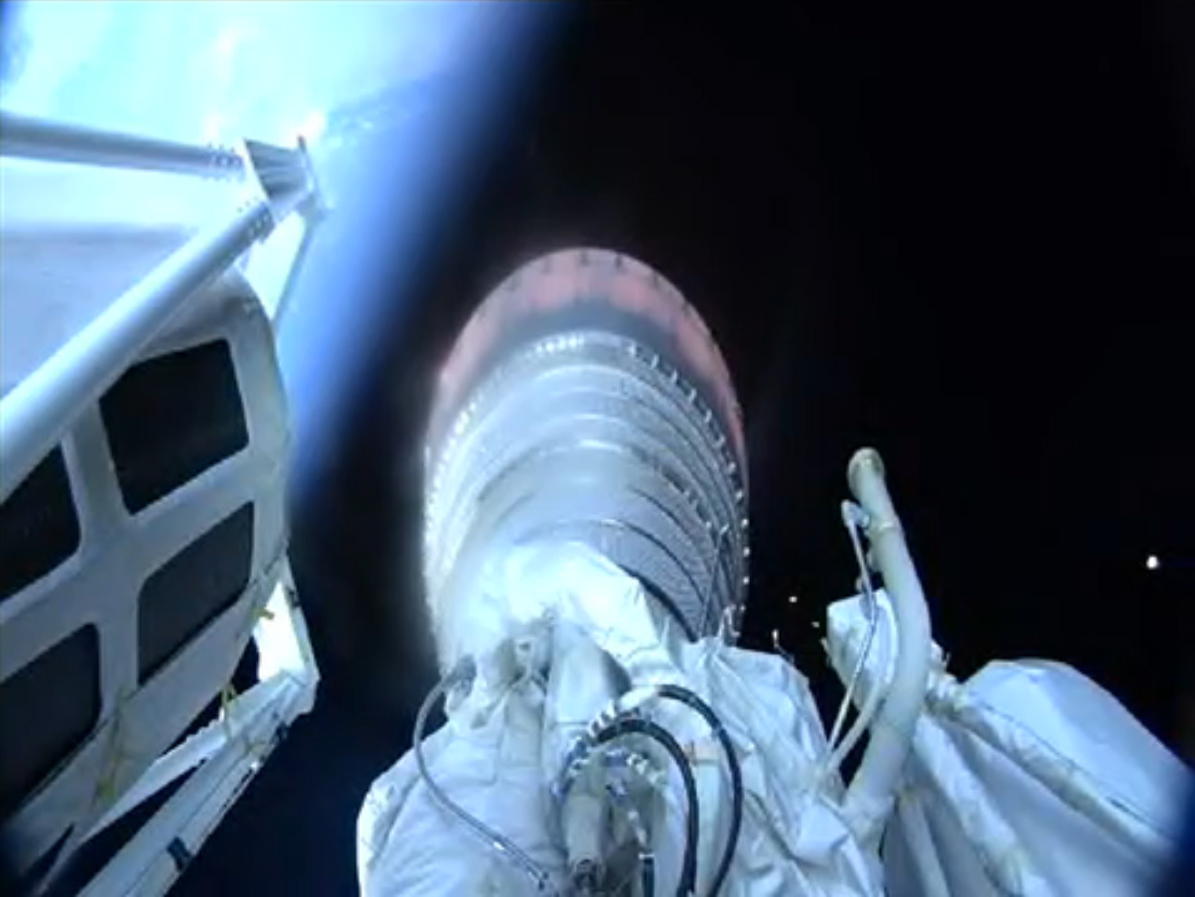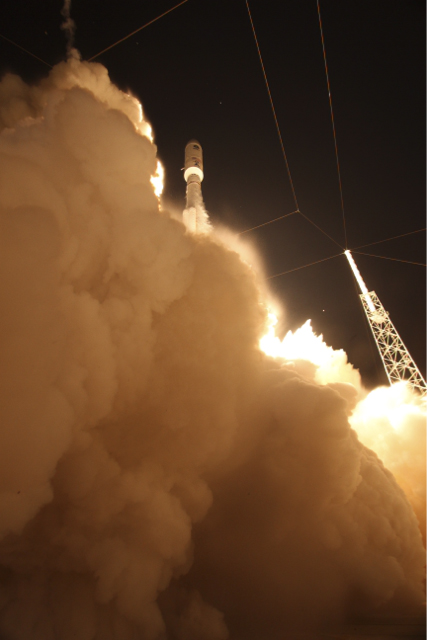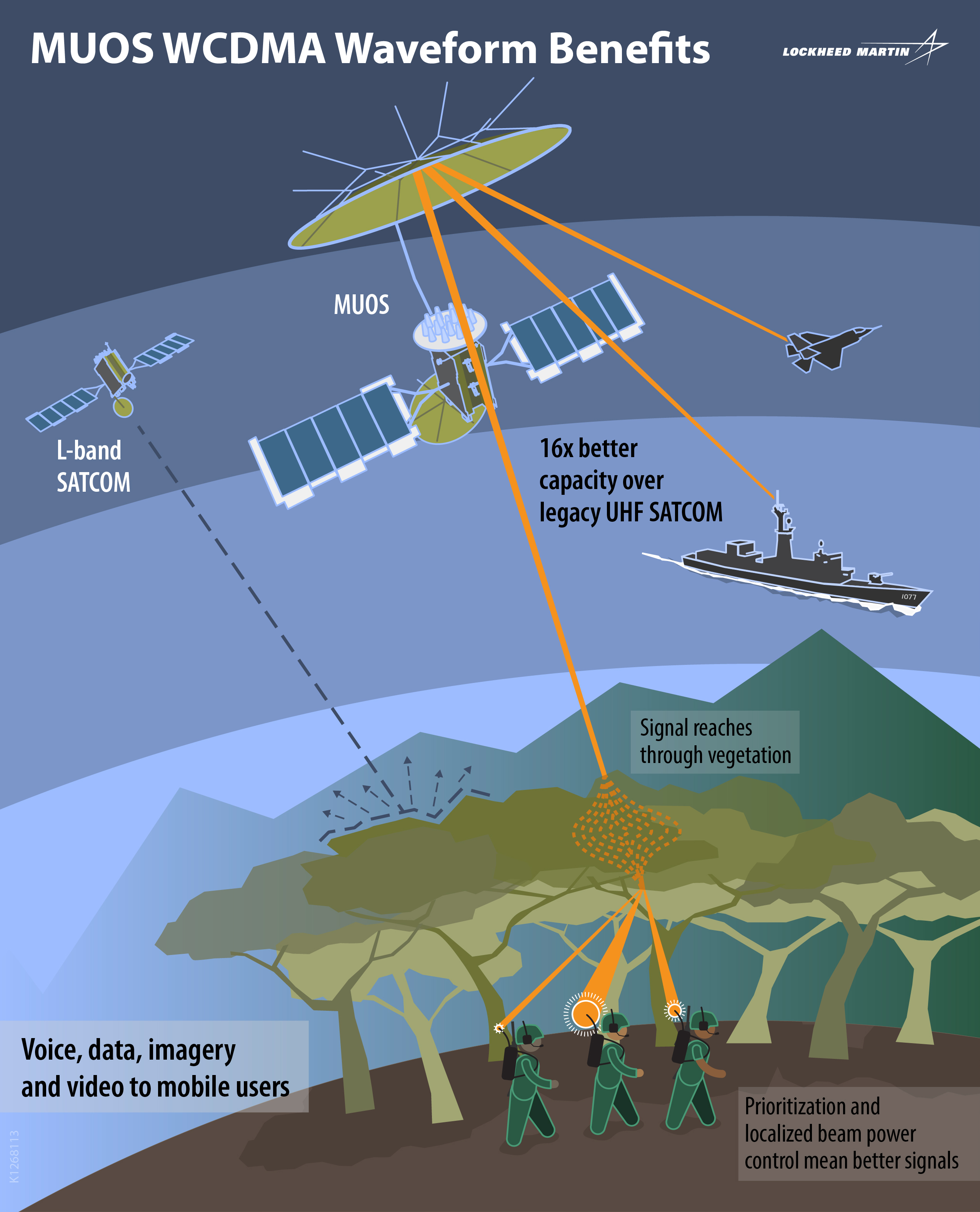US Military Launches Advanced Tactical Communications Satellite Into Orbit

The United States Navy launched an advanced new tactical communications satellite into orbit today (Sept. 2) to join a growing network designed to aid U.S. military forces stationed around the world.
An unmanned Atlas V rocket carrying the Navy's fourth Mobile User Objective System satellite, or MUOS-4, lit up the pre-dawn sky in a dazzling display as it lifted off from a launchpad at Florida's Cape Canaveral Air Force Station at 6:18 a.m. EDT (1018 GMT). It will eventually assume a geosynchronous orbit above Earth. The mission, which was overseen by the U.S. launch provider United Launch Alliance (ULA) was originally scheduled for Aug. 31, but delayed due to bad weather.
The satellite is the fourth installment in the MUOS communications system, which is "designed to significantly improve ground communications for U.S. forces on the move," according to a statement from Lockheed Martin, is building a total of five MUOS satellites for the U.S. military.
The first two MUOS satellites launched in 2012 and 2013. The third MUOS satellite launched in January and is still undergoing testing before it becomes fully operational.
"The MUOS works like a smartphone network in space, vastly improving secure satellite communications for mobile U.S. forces," Navy Commander Paul Benishek said in a ULA webcast just after liftoff.
MUOS is particularly helpful for troops in remote locations, because these soldiers can transmit and receive high-quality communications when the satellites are beyond the line of sight. All U.S. military services will be able to use the MUOS system, the statement said.
"MUOS provides satellite communications in the narrowband spectrum," Navy officials said in a statement. "Although narrowband communication is less than 2 percent of total Department of Defense [DoD] bandwidth, it represents more than 50 percent of all DoD satellite communication users. In addition to ad-hoc situations such as disaster response, narrowband represents the majority of communications for SEAL teams."
Breaking space news, the latest updates on rocket launches, skywatching events and more!
This is the 56th launch of an Atlas V rocket by ULA since the rocket's debut in 2002. It is the sixth launch of an Atlas V rocket in the 551 configuration, which refers to the size of the payload capsule (5.4 meters or 17.7 feet wide), the number of solid rocket boosters (five) and the number of engines (one).
The next MUOS satellite, MUOS-5, is expected to launch in 2016.
Follow Calla Cofield @callacofield.Follow us @Spacedotcom, Facebook and Google+. Original article on Space.com.

Calla Cofield joined Space.com's crew in October 2014. She enjoys writing about black holes, exploding stars, ripples in space-time, science in comic books, and all the mysteries of the cosmos. Prior to joining Space.com Calla worked as a freelance writer, with her work appearing in APS News, Symmetry magazine, Scientific American, Nature News, Physics World, and others. From 2010 to 2014 she was a producer for The Physics Central Podcast. Previously, Calla worked at the American Museum of Natural History in New York City (hands down the best office building ever) and SLAC National Accelerator Laboratory in California. Calla studied physics at the University of Massachusetts, Amherst and is originally from Sandy, Utah. In 2018, Calla left Space.com to join NASA's Jet Propulsion Laboratory media team where she oversees astronomy, physics, exoplanets and the Cold Atom Lab mission. She has been underground at three of the largest particle accelerators in the world and would really like to know what the heck dark matter is. Contact Calla via: E-Mail – Twitter



